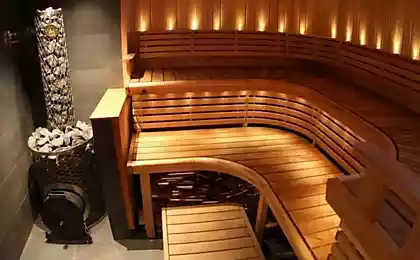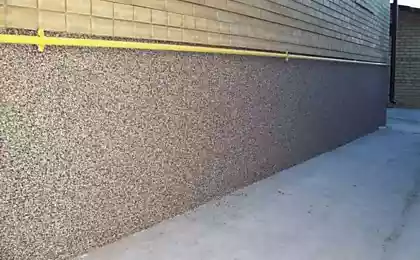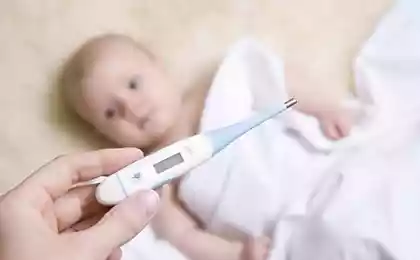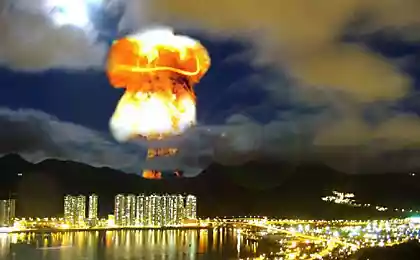689
How to determine the dew point
Wall insulation is one of the main issues during construction. From the first glance it may seem that it is very easy to solve – choose one that is suitable in terms of climate and Finance, and outplay. However, it is not. There are a number of technical conditions that must run to the walls of the house in the cold season do not decay inside and not freeze outside.
One of those conditions is warming the house so that the dew point is closer to the outer wall, and in any case, inside the house. It needs to be able to determine where will be located the dew point at different conditions, to eliminate the possibility of condensation on the walls inside the room.

What is dew pointdew Point is the temperature at which there is maximum saturation of air with steam, and it starts to condense. This figure depends on two essential factors: temperature and humidity.
If you change at least one of these two quantities is changing and dew point, that is, it is constantly moving, as well as not happen all the time, constant temperature and humidity.
There is a table of dew points at different temperatures and humidity. It is possible to see the conditions under which vapor begins to condense. For example, in the winter time when the normative air temperature of +200C and humidity of 50% to 60%, the dew point will vary from 9,30 C to 120C. That is, inside the premises should not be condensation, as under these conditions there is no surface with that temperature.

Will be discussed further. If +200C and the outside temperature is -200C, in the wall there dew point with a temperature of +120 ° C at a relative humidity of 60%. Dew point can move according to the wall thickness depending on the temperature inside and outside the premises, as well as humidity in the wall. The closer the dew point to the inner surface, the greater the likelihood that the wall will be wet from the inside. And this is creating unfavorable conditions for living. Insulated the house, we can shift the dew point, because this changes the temperature of the wall.

Where dew pointCan exist three variants of wall construction without insulation, with outer and inner covering. Consider where may be the dew point in each of these cases?
Construction with no insulation, then the dew point is located:
2. There is outer insulation, then the dew point is:

3. Made of inner sheathing, the dew point will:
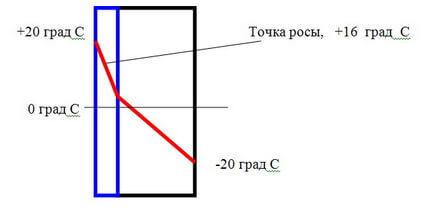
Of the above it becomes clear that the location of the dew point also depends on such characteristics of the fence, such as temperature and water vapor permeability. Most modern heaters are virtually ignores pairs, so it is recommended that the outer covering of the walls.
If you choose internal insulation, it is necessary to comply with the following conditions below:

Knowing the possible areas of condensation, i.e. the location of dew points for certain climate zones to choose the type and material of the insulation, which will not create conditions for damp walls inside the house.
There is an opinion that the house needs to be warmed on the outside and insulation on all parameters correspond to GOST. Then the dew point will be inside the housing, that is outside the house and internal walls will be dry in any season. Therefore, external insulation is more profitable the internal.
To more accurately calculate the dew point, there are a lot of calculators on the Internet.
P. S. And remember, only by changing their consumption — together we change the world! ©
Source: www.allremont59.ru/kak-opredelit-gde-nahoditsya-tochka-rosyi-doma.html
One of those conditions is warming the house so that the dew point is closer to the outer wall, and in any case, inside the house. It needs to be able to determine where will be located the dew point at different conditions, to eliminate the possibility of condensation on the walls inside the room.

What is dew pointdew Point is the temperature at which there is maximum saturation of air with steam, and it starts to condense. This figure depends on two essential factors: temperature and humidity.
If you change at least one of these two quantities is changing and dew point, that is, it is constantly moving, as well as not happen all the time, constant temperature and humidity.
There is a table of dew points at different temperatures and humidity. It is possible to see the conditions under which vapor begins to condense. For example, in the winter time when the normative air temperature of +200C and humidity of 50% to 60%, the dew point will vary from 9,30 C to 120C. That is, inside the premises should not be condensation, as under these conditions there is no surface with that temperature.

Will be discussed further. If +200C and the outside temperature is -200C, in the wall there dew point with a temperature of +120 ° C at a relative humidity of 60%. Dew point can move according to the wall thickness depending on the temperature inside and outside the premises, as well as humidity in the wall. The closer the dew point to the inner surface, the greater the likelihood that the wall will be wet from the inside. And this is creating unfavorable conditions for living. Insulated the house, we can shift the dew point, because this changes the temperature of the wall.

Where dew pointCan exist three variants of wall construction without insulation, with outer and inner covering. Consider where may be the dew point in each of these cases?
Construction with no insulation, then the dew point is located:
- inside the wall closer to the outer surface;
- inside the wall is displaced to the inner surface;
- interior inside, the wall will stay wet throughout the winter period.

2. There is outer insulation, then the dew point is:
- inside the insulation – this suggests that the calculation of dew point and thickness of insulation carried out properly, and the wall in the room will be dry;
- any of the three cases described in paragraph 1 – reason is the wrong choice of insulation and its characteristics.

3. Made of inner sheathing, the dew point will:
- inside the wall closer to the heater;
- on the inner wall surface under the skin;
- in the insulation.

Of the above it becomes clear that the location of the dew point also depends on such characteristics of the fence, such as temperature and water vapor permeability. Most modern heaters are virtually ignores pairs, so it is recommended that the outer covering of the walls.
If you choose internal insulation, it is necessary to comply with the following conditions below:
- the wall was dry and warm;
- the heater had good water vapor permeability and small thickness;
- the building had ventilation and heating.

Knowing the possible areas of condensation, i.e. the location of dew points for certain climate zones to choose the type and material of the insulation, which will not create conditions for damp walls inside the house.
There is an opinion that the house needs to be warmed on the outside and insulation on all parameters correspond to GOST. Then the dew point will be inside the housing, that is outside the house and internal walls will be dry in any season. Therefore, external insulation is more profitable the internal.
To more accurately calculate the dew point, there are a lot of calculators on the Internet.
P. S. And remember, only by changing their consumption — together we change the world! ©
Source: www.allremont59.ru/kak-opredelit-gde-nahoditsya-tochka-rosyi-doma.html








